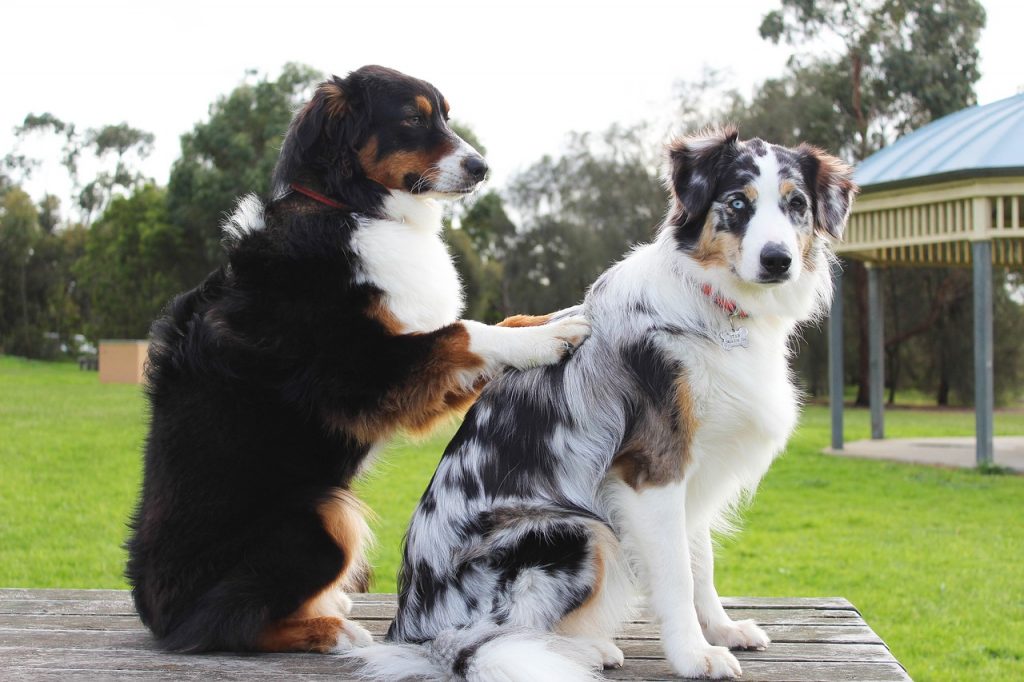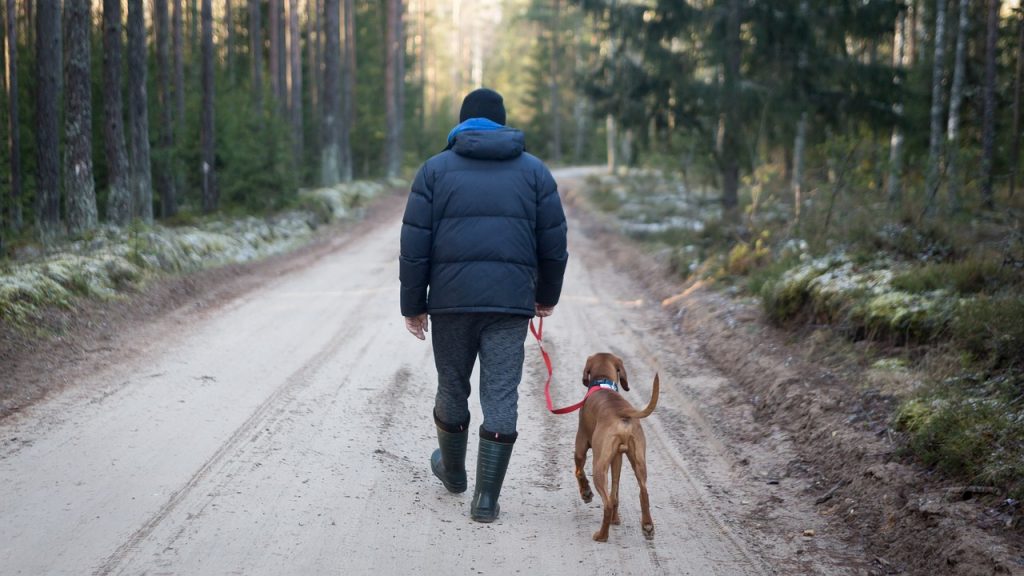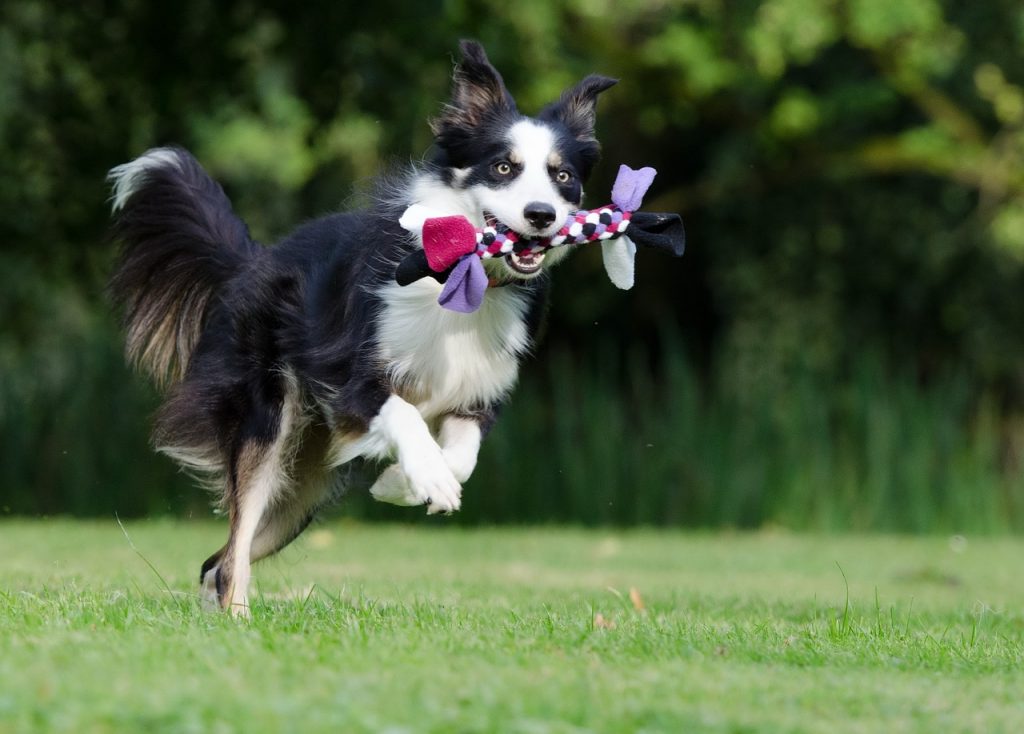Iliopsoas strain in dogs is a relatively common, but frequently missed diagnosis. They can cause varying degrees of rear leg pain and lameness, and are usually aggravated by activity.
An iliopsoas strain in dogs is not too dissimilar to us suffering a hamstring strain. Both muscles are very important in producing power during movement, especially at take-off and during running. The iliopsoas is also very important in deceleration, stopping the rear limbs from extending too far behind the dog during jumping and sprinting.
If you would like to understand more about the iliopsoas muscle in dogs and click here.
Diagnosis of Iliopsoas Strain in Dogs
Diagnosis is commonly through physical examination by a Rehab or Orthopedic Vet (some generalist Vets may not be familiar with this condition), or a Canine Rehabilitation Professional.
Scans, such as ultrasound or MRI, may be useful in more severe cases to determine the extent of muscle damage. X-rays may also rule out other hip, knee, and low back conditions, although these conditions can co-exist.
Muscle strains can take anywhere from 2 weeks to several months to heal. This will depend on the amount of muscle/tendon fibers that are damaged. Controlled progression and patience are really important when returning your dog to pre-injury activity levels.
Treatment of Iliopsoas Strain in Dogs
Iliopsoas Strain Acute Phase: Week 1
The goal of the acute phase is to manage pain and then slowly start to re-establish normal movement. In more severe injuries this phase may take several weeks, with your dog unable to start the rehabilitation exercises straight away.
Pain Management:
Having received the diagnosis, your Vet will likely prescribe your dog a course of NSAID’s. If NSAID’s are required past the first few days take the time to understand the possible side effects. You may discuss alternative pain management options with your Vet moving forward.
Ice therapy may also be a useful tool in the first 48-72hrs post-injury. You can read more about ice therapy in dogs here.
Prevent Re-Injury:
Preventing re-injury is probably the single most important thing you can do to help your dog. Depending on the severity, activity restrictions may include:
- Mild injury: leash walks only. No off-leash running, playing or jumping. Jumping includes greetings as well as getting in and out of cars, sofa’s, & beds. Leash walks only should continue until instructed otherwise.
- Severe injury: Strict crate rest with leashed toileting only.
Manual “Hands-On” Therapy:
If you have a local Rehab Vet, or a Physical Therapist, Chiropractor or Osteopath with additional training in canine rehabilitation then it’s worthwhile seeking their expertise to help you through the treatment and rehabilitation process.
They will complete a thorough physical examination that assesses muscle health, range of motion, and balance around the back, pelvis, and hips.
Treatment will include techniques not too dissimilar to what you would receive if you saw one of these practitioners for a muscle strain (e.g. hip flexor / hamstring strain). Techniques may include massage, trigger point, myofascial release, mobilizations, articulation, and functional treatment.

Depending on the practitioner they may also utilize acupuncture, laser therapy, hydrotherapy (underwater treadmill), or similar in their sessions.
Rehabilitation Exercises For Home:
At the conclusion of your session, your practitioner may prescribe rehabilitation exercises to be completed at home. During the initial phase, the goal is to re-establish normal movement patterns and increase baseline strength.
In more severe injuries these exercises may not be initiated for several weeks, so always seek advice from your Vet or Canine Rehabilitation Professional.
Controlled Leash Walks:
The goal is for your dog’s movement (walking gait) to look normal. Aim for slow and steady not brisk, to begin with. Ideally, the walk should be flat with progressive increases in length as tolerated.
Distance and / or time will be dependent upon the quality of your dog’s movement. These walks may begin as 5-minute toileting walks. Your dog’s movement should not look any worse at the end of the walk, and there shouldn’t be increased stiffness the next morning.
The leash needs to be kept relatively short. If your dog is leash reactive then consider walking where they will not encounter other people, children, or dogs.

If your dog is cleared for leash walks, but they’re still avoiding using their injured leg, walk slower not faster to encourage the use of their injured leg. You may also consider some sessions on an underwater treadmill in this situation.
Three Leg Balance:
With your dog in standing, lift the unaffected rear leg slightly off the ground. There should be no lateral shift through the hips. Hold for a few seconds initially and build tolerance and repetitions (the first time you may simply clear the ground for a couple of seconds once or twice, building to 10 second holds repeated 10 times). Repeat two or more times a day.
If you’re not sure what a lateral shift looks like, lift the affected leg slightly off the ground first. You should see that the pelvis stays square to the ground. This is what you’re looking for when your dog balances on the injured leg.
Sit to Stand:
The sit to stand exercise is just like a bodyweight human squat. It aims to build strength in the muscles around the hips.
The important part of this exercise is the actual sit to stand movement, not the duration of the sit. You do however need to make sure the sit is in good form (no sloppy sit), and there is even weight bearing on the left and right rear legs through the exercise.
If your dog needs help with their square sit you can use a wall or a corner. Because hip extension is limited you should also be able to perform this exercise safely with hip dysplasia or arthritis.
Initially, you want to build to 5-10 repetitions in a row, 1-2x day. You can then progress to 15 repetitions 3-4x day.
If your dog struggles to sit on the floor you can use a raised step, so they’re essentially doing a half squat. From here you can build to full range of motion. Alternatively, you can use a sling to assist with the movement. Remember however to never sacrifice sit form for range of motion.
Stepping Over Obstacles (Cavaletti’s):
This exercise actively uses the iliopsoas to lift the leg over the poles. Your dog may tire quickly. If your dog changes their movement to compensate for their injured leg it’s time to stop.
Set up a row of poles for your dog to walk over. They may be broom sticks, sticks, half pool noodles, or proper cavaletti poles. Use either proper cavaletti holders, or cut up an egg carton to rest the items on, so they don’t roll if they’re bumped.
If you’re cutting poles then hall width (~ 3 feet, 90-100cm) is a good length. You can then use these both inside and outside. By setting up in your hallway you’ll also stop your dog from walking around them.
Initially, you want the poles to be approximately wither height apart and no more than 2 inches off the ground. You can increase the distance apart and height (to no more than hock height) as your dog progresses.
Walk back and forth over the obstacles. The first time you perform this exercise you may walk over three poles 2-3 times. You want to build this to approximately one minute. Your dog should not change their gait (e.g. jump over with two feet).
If you would like more information on Cavaletti for Dogs check out our article here.
Backing Up:
Backing up is a good exercise for rear-end awareness. It basically teaches you dog where their back legs are.
If your dog does not have a backup command you can lure them into a short narrow space (narrow enough so they can’t turn around). They will have to back up to get out of the space. Repeat several times per session.
Iliopsoas Strain Sub-Acute Phase: >1 Week Post Injury Until No Lameness
Pain management, re-injury prevention and & manual therapy strategies should be continued as appropriate. There should be NO off-leash running or playing as these activities increase the risk of re-injury. Remember, preventing re-injury is imperative for healing and return to normal activities.
Rehabilitation Exercises For Home:
The goal of the rehabilitation program through this phase is to encourage progressive return to normal loading.
Controlled Leash Walks:
Continue to progressively build the walk time and / or distance. You can also start to add small hills and / or stairs to your daily leash walks.
Uphill walking increases the range of motion that the hips move through. This means that the iliopsoas is being strengthened through more of its range of motion.
Remember that your dog’s movement should be no worse at the end of the walk than when you start. There should also be no increase in morning stiffness.
Sit to Stand Progression:
If your dog is able to perform the sit to stand exercise 15 times in a row, multiple times per day, then you can progress this exercise onto a small incline. Start with 5-10 reps and build again.
Stepping Over Obstacles (Cavaletti) Progression:
Progression of cavaletti’s will include increasing the width and / or height of the poles – change one at a time. The poles should however not be increased above hock height.
Front Feet Up:
With the rear feet on the ground, encourage your dog to place their front legs on the higher step. Build the duration so that your dog can hold this position for 30+ seconds. Repeat several times per day.
Iliopsoas and Core Activation:
In this exercise your dog will be standing evenly on all fours. Their feet should not move. Use a lure to get them to lean forward one to two inches. You’ll see their back muscles activate and the slight hip extension will get the iliopsoas muscle to activate while it’s being lengthened. Hold this position for 1-2 seconds then repeat. Build to 5-10 reps.
The advanced progression of this exercise would see your dog’s rear feet up on a step behind them. The front legs would hold their normal standing position. Use a lure to get the dog to stretch forward and down towards the ground without moving their foot position. Then lure your dog to follow the treat back and under its chest. Build to 10 reps repeated daily. This exercise should only be performed when all other exercises can be performed with no issues.
Iliopsoas Strain Return to Sport / Play: Requires No Lameness
Re-injury prevention and & manual therapy should be continued as appropriate. Off-leash running or playing will be progressively re-introduced during this phase.
Rehabilitation Exercises For Home:
The goal of the rehabilitation program through this phase is to encourage the progressive re-introduction of dynamic movements, and finally all activities. There should be no lameness and no tenderness on palpation of the iliopsoas muscle before progressing on to this stage.
If there is any regression in movement and / or stiffness the next morning then your dog is not ready to continue with this phase just yet. Rest as required, then resume the exercises from the sub-acute phase. Once your dog’s movement returns to normal you can try again approximately 7 days later. If your dog suffers a re-injury at any stage you need to return to the acute phase.
Exercises should only be completed after an adequate warm-up. An example of a warm-up may be a 5-10 minute leash walk.
Easy Fetch:
In an area with good footing, throw a non-bouncing toy a short distance away. Ask your dog to fetch the object. Repeat 2-3x initially and build reps and distance as tolerated. Complete once a day.
Jumping:
Start with jumping onto a low object or platform. Repeat 2-3x initially and build reps and height. You can also progress to your dog jumping over the object. Repeat once per day.
Tug of War:
Gentle tug to begin with. Keep the spine in alignment when you are tugging (don’t lift your dog’s head up too high into extension). Be careful not to release the tug toy when your dog is pulling too hard initially. Remember it’s a rehab exercise for your dog so don’t get carried away with the amount of tugging and / or duration. Build from ~30 seconds to several minutes. Repeat once per day.
Return to Normal Off-Leash Activity and Play:
Off-leash running (don’t forget the warm-up). Start in a controlled environment away from other dogs and balls. The surface should also have solid footing (no beach – soft sand).
The return to off-leash running would be similar to you going for a run for the first time in a while, except your dog doesn’t have an off switch like you. Limit the first time to ~5 minutes and build from there. Repeat once per day.
Once your dog has built to 15-30 minutes of off-leash running you can then look to introduce a ball or other dogs. Soft sand should only be considered once your dog is very comfortable in an off-leash environment with stable footing.
Return to Agility:
Practice with one or two pieces of equipment (e.g. jumps or contact equipment) in a flowing course. In 2-3 weeks you can then look to introduce tighter turns and then finally weave poles.
If your dog is able to perform all activities with no lameness or stiffness, for no less than one month, then you’ve finally reached the end of the rehabilitation. Well done!
Conclusion
Iliopsoas injuries in dogs can vary from mild to severe. While mild cases tend to resolve in a few short weeks, more severe injuries can take months to heal.
The risk of re-injury is a real concern as it’s hard to stop your dog from playing and running, especially around the house. But its that ‘one time’ that is important to try and avoid.
Following a progressive rehabilitation program will enable your dog to return to its pre-injury activities, but it will take time and patience on your part. You need to help your dog progressively strengthen the iliopsoas. This is no different to if you were a sports person rehabbing a hamstring injury. The worse the hamstring injury, the longer it would take for you to return to your sport.

